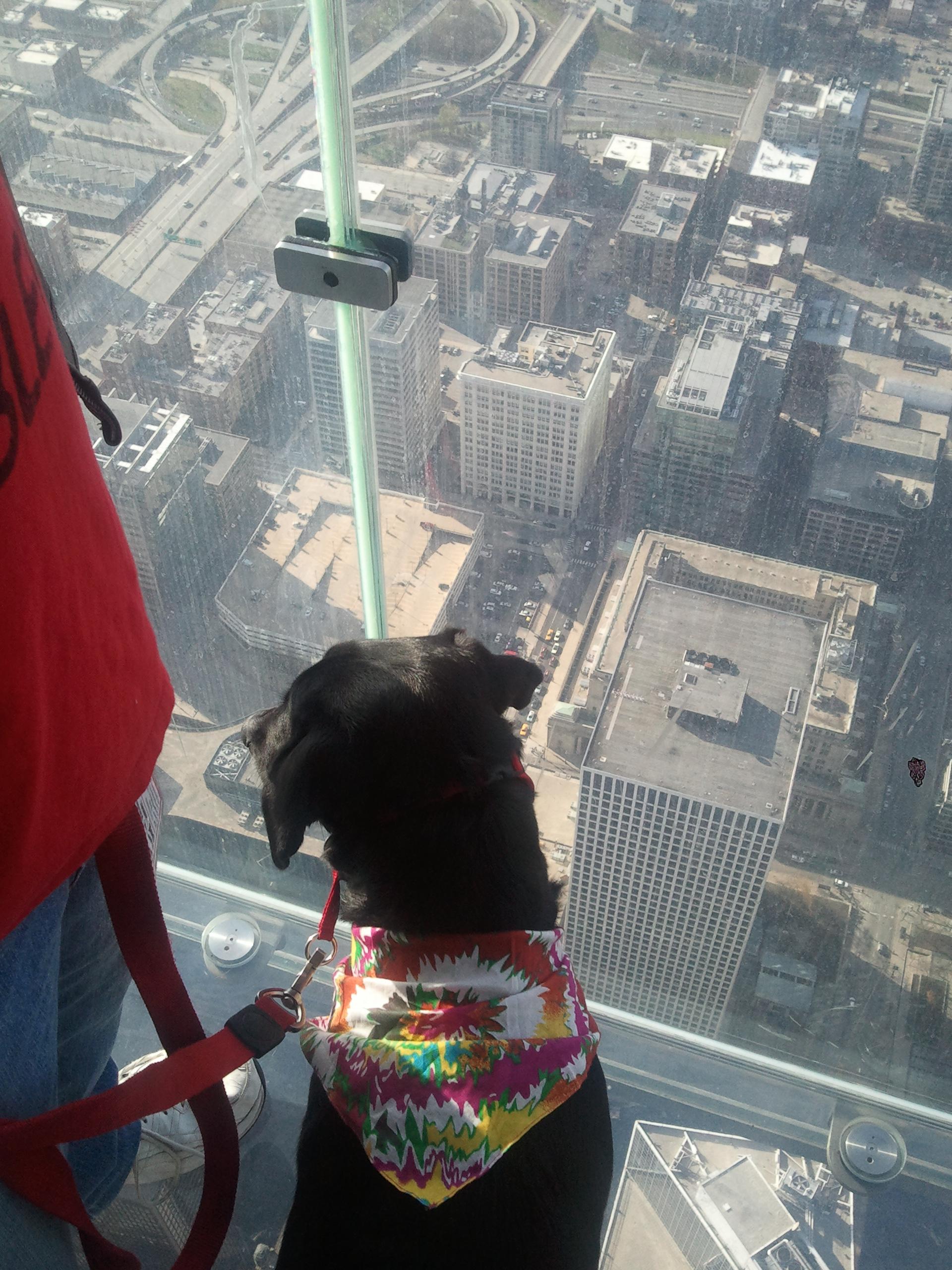What is the role of a service dog?
The intricate and multifaceted role of a service dog extends beyond mere assistance; these remarkable canines become indispensable partners in the daily lives of individuals with disabilities, enriching their experiences and fostering a sense of autonomy. By addressing a spectrum of physical, sensory, and psychiatric challenges, service dogs become tailored companions, uniquely attuned to the specific needs of their handlers.
The role of a service dog transcends the tangible tasks they perform. These canine companions become conduits of empowerment, enabling individuals with disabilities to engage with the world on their terms, fostering independence, confidence, and an enduring sense of connection. In their unwavering commitment and skill, service dogs embody the transformative potential of the human-animal bond. Service dogs play a crucial role in aiding and support to individuals with various disabilities.

Legally, the Americans with Disabilities Act (ADA) acts as a crucial shield, ensuring that service dogs and their handlers can navigate the world with freedom and dignity. Granting access to public areas, housing, and other spaces, the ADA acknowledges the vital role these dogs play in fostering inclusivity.
The distinction between service dogs and conventional pets lies in the rigorous training these animals undergo. Their preparation spans years and involves not only mastering specific tasks but also cultivating an unwavering focus and discipline. Whether in bustling public spaces or more subdued environments, service dogs exhibit a level of professionalism that sets them apart as resolute working animals.
In the realm of physical disabilities, service dogs demonstrate an astonishing capacity to guide individuals safely through their surroundings, offering not just guidance but a profound sense of security. The physical support they provide goes beyond the ordinary, enabling their handlers to navigate spaces and engage in activities that might otherwise be daunting or impossible.
The sensory prowess of service dogs is equally remarkable. Trained to alert their handlers to sounds or changes in the environment, these canines function as vigilant guardians, enhancing situational awareness. This acute sensitivity extends to tasks such as retrieving objects, empowering individuals to overcome the challenges associated with limited mobility.
In the realm of psychiatric conditions, service dogs play a transformative role. Their intuitive ability to detect and respond to emotional cues becomes a source of solace for those grappling with mental health challenges. This includes tasks such as interrupting self-harming behaviors, providing deep pressure therapy during anxiety or panic episodes, and offering a comforting presence that can mitigate the impact of conditions like post-traumatic stress disorder (PTSD).
Here is a more detailed exploration of the diverse types of service dogs and their specific roles:
Visual Assistance Dogs
are specially trained to provide support to individuals with visual impairments. They assist their handlers by navigating obstacles, guiding them safely across streets, and locating objects or landmarks. These dogs are not just companions but essential aids in fostering independence for those with visual challenges.
Audio Assistance Dogs
are trained to assist individuals with hearing impairments. They alert their handlers to important sounds, such as doorbells, alarms, or approaching vehicles. These dogs play a crucial role in enhancing the safety and awareness of their handlers in various environments.
Mobility Assistance Dogs
are trained to aid individuals with physical disabilities by providing stability and assistance with tasks like retrieving objects, opening doors, or helping their handlers maintain balance while walking. These dogs are invaluable partners, promoting greater autonomy and confidence for those with mobility limitations.
Medical Assistance Dogs
are trained to support individuals with medical conditions, such as diabetes or epilepsy. They can detect changes in their handler's body odor or behavior, alerting them to an impending medical issue. These dogs contribute significantly to the well-being and health management of their handlers.
Psychiatric Assistance Dogs
are trainind to offer support to individuals with mental health conditions by performing tasks that alert to an impending mental health episode, thereby reducing its severity and duration. In addition to this, they may interrupt self-harming behaviors, retrieve medications, and even lead the handler away from the source of the episode.
Autism Assistance Dogs
undergo specialized training to aid individuals with autism spectrum disorders. They execute tasks that offer companionship, emotional stability, and play a role in preventing or managing sensory overload and self-harming behaviors. These dogs significantly contribute to the overall well-being and comfort of individuals with autism.
Allergy Assistance Dogs
are trained to detect and alert their handlers to potential allergens, such as nuts or gluten. They play a crucial role in preventing allergic reactions and providing a sense of security for individuals with severe allergies.
In summary,
each type of service dog is uniquely trained to address specific needs, enhancing the quality of life for individuals with disabilities across various domains, from physical mobility to emotional well-being and medical management.
The bond between these dogs and their handlers is built on trust, mutual understanding, and the incredible abilities these dogs bring to enhance the quality of life for their human companions.
How to act around a service dog.
When you come across a service dog and its handler, it is crucial to recognize that the dog is not just a furry companion but a working partner. To create a positive and safe environment, adhere to these guidelines:
- No Petting or Distractions:
- Although service dogs are friendly, they are trained to stay focused on their handler's needs. Resist the temptation to pet, play with, or otherwise distract the dog.
- Avoid Offering Food or Treats:
- Offering treats might seem like a friendly gesture, but it can divert the dog's attention from its duties and potentially lead to health issues. Refrain from giving any food or treats.
- Speak to the Handler:
- Direct your communication to the handler rather than the dog. The handler and the service dog share a unique bond, and it is important to respect that relationship.
- Give Ample Space:
- Allow enough room for the service dog and its handler to move freely. Avoid crowding them and never walk between the dog and its handler, as this could disrupt their work.
- Do not Assume Help is Needed:
- While the intention to assist is appreciated, avoid assuming the handler needs help. Respect their independence, and if they require assistance, trust that they will ask for it.
- Avoid Staring or Pointing:
- Staring or pointing at the service dog or its handler can be intrusive and make the handler uncomfortable. Treat them with the same respect and dignity you would offer anyone else.
By following these detailed guidelines, you contribute to the well-being and effectiveness of service dogs and their handlers, allowing them to conduct their essential tasks without unnecessary distractions.
The Fake Service Dog Issue
The surge in counterfeit service dogs is undeniably a worrisome trend, and its implications extend far beyond initial concerns. Let us explore the reasons why this issue holds such significance:
- Safety Hazards:
- Counterfeit service dogs, lacking proper training, introduce an element of unpredictability and pose safety threats to individuals and other animals. In public settings, the unfamiliar surroundings can trigger erratic behavior, potentially leading to accidents or incidents.
- Reputational Harm to Legitimate Service Dogs:
- Legitimate service dogs and their handlers dedicate substantial time and effort to training, ensuring impeccable behavior and task performance. The misbehavior of fake service dogs can tarnish the reputation of genuine service dog teams. This casts doubt and impedes the acceptance of authentic service dogs in public spaces.
- Increased Challenges for People with Disabilities:
- Businesses, grappling with the challenge of distinguishing real from fake service dogs, might adopt overly cautious measures. This caution could result in legitimate service dog teams encountering unnecessary barriers and restrictions in accessing public places, amplifying the difficulties faced by people with disabilities.
- Frustration for Law-Abiding Dog Owners:
- Individuals who conscientiously adhere to regulations regarding dogs in public spaces may experience frustration when fake service dogs are granted entry. The inconsistency in enforcing rules creates a challenging environment for law-abiding dog owners to navigate and enjoy public spaces within established guidelines.
Addressing the counterfeit service dog issue necessitates a collaborative endeavor. Businesses, individuals, and service dog organizations must unite to establish clearer guidelines, educate the public, and devise effective methods for discerning legitimate service dogs. Through such concerted efforts, we can safeguard the rights of those genuinely reliant on service dogs for assistance, striking a balance that ensures access while upholding safety and integrity.


